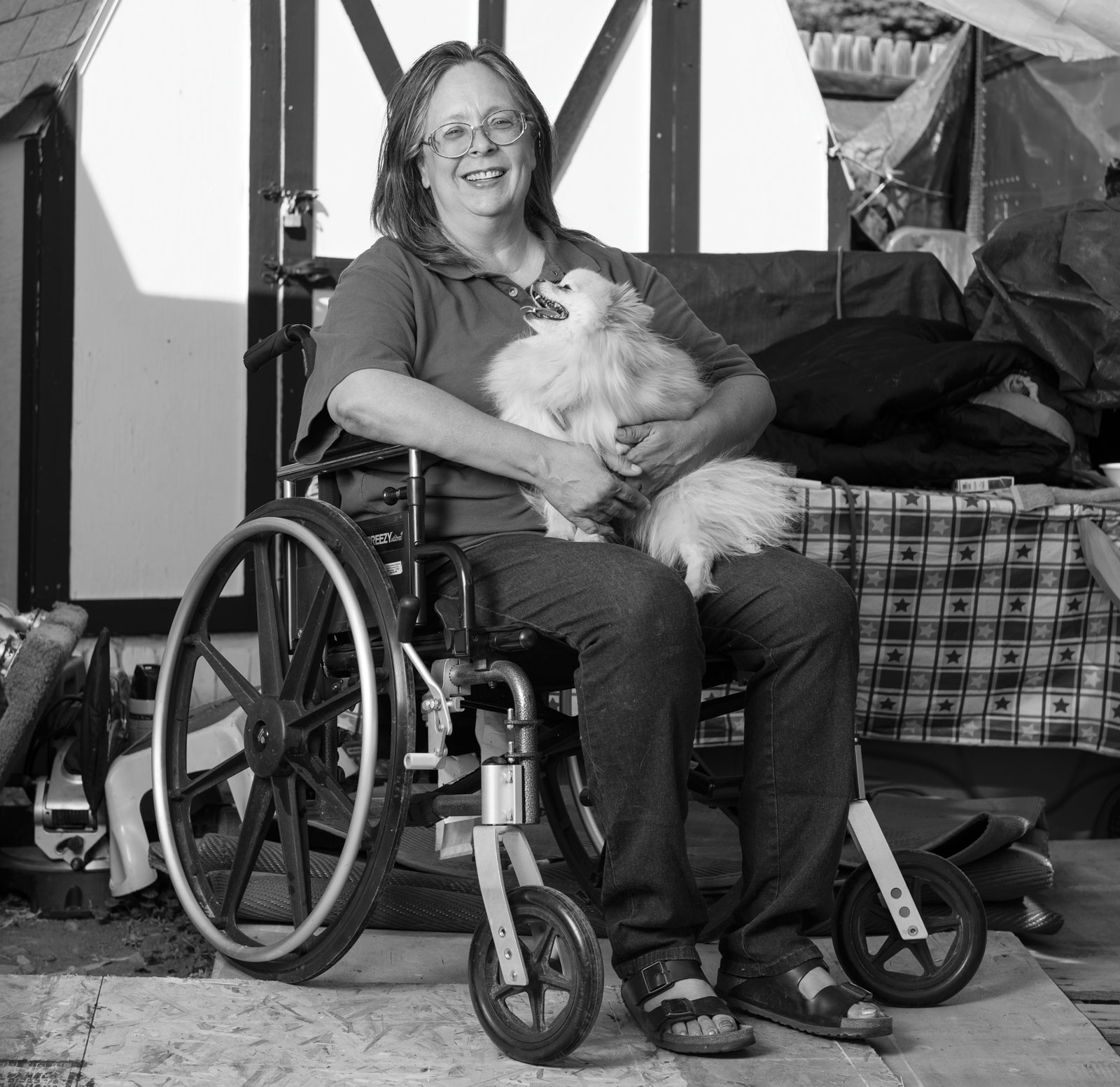The Local newsletter is your free, daily guide to life in Colorado. For locals, by locals.
For now, the greyhound bus is parked in a Westminster trailer park. Nicknamed BRB, for “Big Red Bus,” the rusted vehicle has been converted into a home where 59-year-old Linda lives with her husband, two dogs, and the youngest of six kids. On an August morning, she sits just outside her home in a wheelchair she uses because of chronic pain and remembers all of the things that went wrong when so much should have been going well.
In February 2012, Linda’s daughter Chantel gave birth to a healthy baby girl in Texas, where she lives. Two weeks later, though, Chantel was in the hospital with an MRSA infection, an antibiotic-resistant infection that can be deadly. Linda didn’t hesitate: She took time off work as a customer service representative for a health-insurance provider and drove 13 hours to stay with her daughter while she recovered. She was back to work within a week. Two months later, a horse she’d been feeding panicked and knocked her to the ground, where it stepped on her hand and kicked her in the ribs. She was unable to work for eight weeks and took short-term disability through her employer. She received only 60 percent of her paycheck as bills emptied her savings.

Linda began to panic. She had health insurance, which was helping with her medical expenses, but she’d maxed out several credit cards to stay financially stable while paying for everything insurance didn’t cover. Then, in August 2012, complications during a heart surgery left her father unable to care for himself. She asked her employer for unpaid leave to help him at the end of his life and was denied. She went to be with her father anyway; she felt like she had to. “Your parents help you take your first steps in this world,” she says, explaining why the decision was easy to make.
Any of these medical crises—one of the main reasons people become homeless—would be difficult to overcome, but three in seven months was financially devastating. Linda has struggled to find a full-time gig since leaving her customer-service job, especially because chronic pain limits her to work that doesn’t involve lifting anything heavier than five pounds. She thought about becoming a commercial driver but can’t because she uses medical marijuana to help her sleep. (You need to pass a drug test to earn a commercial driver’s license.) There isn’t enough money to rent a house, so her family converted an old bus into mobile living quarters.
Linda distracts herself each day by doing something that feels natural: caring for her family. She sits outside in the morning in her wheelchair to let the dogs play, run, and scratch the ground. She checks up on her children and her grandkids. When her two sisters call to ask for advice, Linda still plays counselor, even though she has too much pride to ask them for financial help. “That’s what families do,” she says of making difficult choices to take care of the people she loves—again and again. “If we don’t, what’s the point?”
*Last name withheld
Truth Busters
There are plenty of stereotypes and myths about homelessness, but what’s fact and what’s not? —Jerilyn Forsythe & Natasha Gardner
The Myth: Pets on the street are abused or neglected.
The Reality: Furry friends may be treated better than their owners, says Leslie Irvine, a sociology professor at University of Colorado Boulder who spent three years studying pets and the homeless community. She found that owners often forego shelter to avoid separation and make sure their pets are full before worrying about their own stomachs.
The Myth: Because of marijuana legalization, homeless people are flocking to Denver to get high.
The Reality: Many service providers have seen an influx since January 1, 2013 (Father Woody’s Haven of Hope reports serving about 225 additional people a month). But the uptick isn’t just from people wanting to toke up; it includes folks looking for pot industry jobs, only to find out that they need to establish one-year residency to be eligible.








